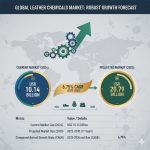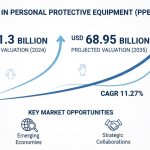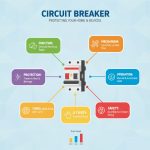Revolutionizing Identity: Human Identification Market Set to Triple by 2035 Amid Surge in Forensic DNA, AI Biometrics, and Rapid-DNA Adoption
According to analysts at Vantage Market Research, the Global Human Identification Market size is worth USD 1.1 Billion in 2024 and is projected to reach USD 3.25 Billion by 2035, growing at a CAGR (Compound Annual Growth Rate) of 10.4% from 2025 to 2035. The key trends include increasing adoption of NGS, automation in DNA analysis, rising forensic applications, government funding, AI-driven solutions, rapid STR analysis, and expanding use in ancestry testing. Additionally, as governments, labs, and enterprises adopt DNA sequencing, biometrics, and advanced analytics, the human identification market is poised for a transformative growth trajectory. This press release outlines an updated market outlook, segmentation, regional dynamics, competitive insights, and strategic goals through 2035.
Our comprehensive Human Identification Market report is ready with the latest trends, growth opportunities, and strategic analysis. View Sample Report PDF.
Key Takeaways from the Report
- North America dominated the market industry with 52.5% of market share in 2024. Market is driven by advanced forensic infrastructure, significant government funding, and a high incidence of criminal investigations
- Based on the Product, the Consumables category accounted for significant market share in 2024. Consumables have a considerable market share because leading industry players have consistently introduced novel and sophisticated consumables
- In 2024, by Technology, Polymerase Chain Reaction dominated the market with significant market share of 40.5%. PCR is a widely used technique in human identification that amplifies DNA samples, making it possible to analyze even minute traces of genetic material
- By End User, Forensic Laboratories dominated the market with significant market share of 52.2% in 2024. These labs rely on advanced instruments, consumables, and software to ensure accurate and efficient forensic investigations
- Recent development: In 2024, QIAGEN partnered with the Snow Molecular Anthropology Lab to deploy NGS forensic tools for identifying previously unidentified human remains in the “Sugarland 95 DNA project
Premium Insights
Human identification is evolving beyond classic forensic DNA to integrate next-generation sequencing (NGS), rapid DNA, forensic genetic genealogy, and AI-driven biometric identity verification. The convergence of molecular biology, data science, and cloud computing is pushing capabilities such as degraded sample analysis, low-input DNA, and verifying identity in remote or field settings. Governments worldwide are expanding DNA databases, and privacy, ethics, and data security concerns are influencing adoption strategies and regulation.
Market Size & Forecast
According to Vantage Market Research, the human identification market is valued at USD 1.10 billion in 2024, and is projected to reach USD 3.25 billion by 2035, reflecting a CAGR of 10.4% (2025–2035). This robust growth underscores rising demand from forensic, governmental, biometric, and identity sectors.
While the market features several large life-sciences and forensic players (e.g. Thermo Fisher, Illumina, QIAGEN, Bio-Rad), it also allows entry for specialized biotech and AI/biometric startups. Barriers include regulatory approval, data privacy constraints, high R&D costs, and the need for deep domain expertise. The market leans toward technology partnerships, acquisitions, and alliances to combine domain knowledge, sample prep, instrumentation, software, and bioinformatics offerings.
For Human Identification Market Research Report and updates detailed: View Full Report Now!
Analyst’s Perspective & 2026 Strategic Goals
From an independent analyst perspective, the Vantage projection is well aligned with current momentum in forensic modernization, biometrics, and identity verification. However, execution risks lie in regulation, privacy, and technical integration. Players that can deliver seamless, secure, and fair solutions will lead the pack.
2026 Goals for Key Players
- Thermo Fisher Scientific: Launch at least one rapid-DNA sequencer optimized for field use and secure forensic chain-of-custody integration.
- QIAGEN: Expand forensic NGS kit adoption by signing 5 additional national forensic labs contracts (e.g. in Latin America, Africa).
- Illumina / Verogen: Deliver upgrades to forensic pipelines optimizing low-input DNA and degraded samples, with accreditation in at least two new countries.
- Bio-Rad / Hamilton: Introduce modular consumables-as-a-service models for forensic labs to lower upfront costs.
- Eurofins / Agilent: Expand software / bioinformatics platforms for identity verification (non-forensic) use cases, combining biometric + genomic data under compliance frameworks.
Product Insights
The Human Identification Market by product is segmented into Consumables, Instruments, and Software & Services. Consumables account for the largest market share owing to their recurring demand across DNA extraction, amplification, and sequencing workflows. Instruments such as PCR systems, capillary electrophoresis units, and NGS platforms enable advanced forensic capabilities, while software and services support data analysis, interpretation, and secure database management. The growing integration of automation and bioinformatics is reshaping product innovation and workflow efficiency in forensic labs.
Technology Insights
Based on technology, the market is categorized into PCR, Capillary Electrophoresis, Next-Generation Sequencing (NGS), Rapid DNA Analysis, Microarrays, and others. PCR and STR analysis dominate due to their reliability and global standardization in forensic applications. However, NGS and rapid DNA are the fastest-growing technologies, offering high-resolution genetic profiling and on-site identification. Continuous improvements in microarray and hybrid techniques are further enhancing data accuracy, enabling law enforcement agencies and laboratories to perform faster, more comprehensive human identification.
Application Insights
The market, by application, includes Forensic Casework, Paternity & Kinship Testing, Disaster Victim Identification, Missing Persons Identification, and Others. Forensic casework remains the primary segment, driven by the increasing need for accurate criminal investigation and judicial evidence. Paternity and kinship testing is growing due to rising legal and immigration applications, while disaster victim identification plays a vital role in natural calamities and conflict zones. Expanding adoption in civil identification and border control is further boosting application diversity globally.
End User Insights
By end user, the market is segmented into Forensic Laboratories, Government & Law Enforcement Agencies, Academic & Research Institutes, and Private & Commercial Organizations. Forensic laboratories dominate due to their extensive use of DNA and biometric tools for evidence validation. Government agencies invest heavily in national DNA databases and identity verification programs. Academic institutes focus on genetic research and technology development, while private security firms and biotech companies leverage these tools for biometric authentication and personalized genomics, enhancing the sector’s commercial potential.
Regional Insights
North America Human Identification Market Trends
North America commands the largest share, supported by extensive forensic infrastructure, advanced research funding, and matured regulatory frameworks. Agencies like FBI and DOJ continue expanding DNA databases and adopting advanced sequencing. The region leads in technology adoption including rapid DNA, forensic genealogy, and integration with biometric identity systems. The U.S. is a key growth engine for instrument and software deployment.
Europe Human Identification Market Trends
Europe’s push is shaped by stringent data privacy (GDPR) and ethical oversight, yet many nations invest heavily in forensic modernization. Cross-border collaboration and shared databases (e.g., Eurojust, Europol initiatives) drive harmonization. Uptake of NGS, forensic genealogy, and AI verification is growing in Western Europe, while Eastern Europe is catching up via infrastructure grants.
Asia Pacific Human Identification Market Trends
Asia Pacific is projected to grow fastest, fueled by rising crime rates, expanding forensic budgets, and modernization in nations like China, India, Japan, Australia, and Southeast Asia. Many countries are building or upgrading DNA labs, expanding identity databases, and adopting biometrics. The blend of developing regions and technological ambition offers high upside potential.
Latin America Human Identification Market Trends
Latin American growth is constrained by lower per-capita spending and weaker labs in some countries, but rising crime, social demands, and international cooperation are leading to investments. Countries like Brazil, Mexico, and Argentina are upgrading forensic capacities. External support and partnerships are often used for capability building. Cross-border forensic frameworks (e.g. INTERPOL, MERCOSUR) also influence trends.
Middle East & Africa Human Identification Market Trends
In the Middle East, wealthier GCC nations are investing in advanced forensic / biometric systems for security, anti-terrorism, and identity management. In Africa, many countries are building capacity in forensic labs, though challenges such as infrastructure, funding, and technical skill persist. Partnerships with international forensic bodies and NGO-driven projects help boost capability in identification, especially for missing persons or conflict-related identification.
Key Human Identification Company Insights
Key Human Identification Companies
Prominent global and regional players include:
- Thermo Fisher Scientific Inc.
- Illumina Inc.
- QIAGEN N.V.
- Bio-Rad Laboratories Inc.
- Hamilton Company
- Agilent Technologies Inc.
- Siemens Healthcare GmbH
- Eurofins Scientific
- Abbott Laboratories
- BD (Becton, Dickinson & Co.)
- Verogen Inc.
These firms invest in consumables, instrumentation, software, cloud bioinformatics, and partnerships in forensic and identity ecosystems.
Recent Developments
In 2024, QIAGEN entered a partnership with the Snow Molecular Anthropology Lab to support forensic identification of Indigenous remains using MiSeq FGx, ForenSeq Kintelligence kits, and NGS workflows, helping build a dedicated DNA database for previously unidentified remains (Sugarland 95).
Future Investments by Key Players in the Human Identification Market (2024–2025)
- Thermo Fisher Scientific: Invested in expanding its forensic DNA analysis capabilities, enhancing product offerings for criminal justice applications.
- Illumina: Focused on advancing next-generation sequencing technologies, aiming to improve accuracy and speed in human identification processes.
- QIAGEN: Developed new sample preparation kits to streamline DNA extraction, facilitating more efficient forensic investigations.
- Bio-Rad Laboratories: Introduced automated systems for DNA analysis, reducing human error and increasing throughput in forensic labs.
- Hamilton Company: Enhanced liquid handling systems to support high-throughput DNA analysis, catering to the growing demand in forensic and clinical applications.
- ANDE Corporation: Launched portable rapid DNA analyzers, enabling on-site human identification in various field settings.
- Eurofins Scientific: Expanded its forensic services portfolio, integrating advanced DNA profiling technologies to improve case resolution times.
- Laboratory Corporation of America Holdings: Invested in genomic testing infrastructure, supporting both forensic and clinical human identification needs.
- Promega Corporation: Developed new reagents and kits for DNA amplification, enhancing the sensitivity and reliability of forensic analyses.
- Verogen Inc.: Focused on expanding its forensic genomics capabilities, providing comprehensive solutions for human identification in legal contexts.
These strategic investments are aimed at enhancing technological capabilities, expanding service offerings, and meeting the increasing demand for efficient and accurate human identification solutions in forensic and clinical settings.
Human Identification Market Report Scope
This report covers the human identification market globally with base year 2024, forecast to 2035. Regional coverage includes North America, Europe, Asia Pacific, Latin America, Middle East & Africa. The report also examines competitive landscape, market drivers & challenges, regulatory / ethical factors, and recent strategic developments.
Market Dynamics
Driver
The primary driver of the human identification market is the rising demand for accurate and rapid identification in criminal investigations, forensic casework, and civil applications. Increasing crime rates, forensic backlogs, and the need for national DNA databases are pushing governments and law enforcement agencies to invest in advanced DNA sequencing, rapid DNA, and AI-based biometric solutions. Additionally, natural disasters and mass casualty events are expanding the need for disaster victim identification, further propelling market growth globally.
Restraint
Strict regulatory frameworks and privacy concerns act as key restraints in market growth. Handling sensitive genetic data requires compliance with data protection laws, ethical guidelines, and consent protocols, which can slow adoption. Cross-border sharing of DNA and biometric data is often restricted, and ethical concerns about genetic surveillance, discrimination, or misuse can limit deployment in certain jurisdictions, especially in developing regions with less regulatory clarity.
Opportunity
Integration of AI, cloud computing, and hybrid molecular/biometric systems creates significant opportunities for market expansion. Rapid DNA analysis, low-input DNA processing, and portable identification devices enable on-site forensic and security applications, reducing turnaround time and operational costs. Emerging markets, growing forensic infrastructure, and the rising adoption of NGS and bioinformatics platforms provide potential for commercialization, strategic partnerships, and development of new business models, such as consumables-as-a-service or software subscription-based offerings.
Challenges
High capital investment and operational complexity present challenges to market participants. Ensuring data accuracy, avoiding bias in AI algorithms, maintaining chain-of-custody integrity, and meeting accreditation standards for forensic laboratories are critical hurdles. Additionally, evolving technological standards, training personnel, and integrating multidisciplinary systems (molecular, biometric, software analytics) add operational complexity. Addressing public trust, regulatory compliance, and interoperability across jurisdictions remains an ongoing challenge for both established and emerging players.
Global Human Identification Market Report Segmentation
Segments in this report include:
- By Product: Consumables (kits, reagents), Instruments, Software & Services
- By Technology: PCR, Capillary Electrophoresis, NGS, Rapid DNA, Microarrays, Others
- By Application / Use Case: Forensics, Paternity / Kinship, Disaster Victim ID, Missing Persons, Identity Verification
- End User: Forensic Labs, Research Centers And Academic & Government Institutes, Others End Users
- Region: North America, Europe, Asia Pacific, Latin America, Middle East & Africa
Frequently Asked Questions
Q.1 What is the market size in 2024 and the forecast to 2035?
- The market is valued at USD 1.10 billion (2024).
- Forecast reaches USD 3.25 billion by 2035, at CAGR 10.4% (2025–2035).
Q.2 Which region dominates and which region grows fastest?
- North America currently holds the largest share.
- Asia Pacific is expected to post the fastest growth.
Q.3 Which product / type segments are leading?
- Consumables are dominant due to recurring usage and high volume demand.
- Instruments and software are strong growth areas, especially as labs modernize.
Q.4 What are the key application areas?
- Forensic casework remains the largest application.
- Additional growth holds in identity verification, disaster victim identification, and missing persons.
Q.5 Who are the major players and what strategies are they pursuing?
- Major players: Thermo Fisher, Illumina, QIAGEN, Bio-Rad, Hamilton, Agilent, Eurofins, Verogen.
- Strategies: acquisition, platform integration, bioinformatics, field-deployable devices, partnerships in forensic and identity networks.
![[Market Research Reports] – Research Google News Blog | VMR.Biz](https://www.vmr.biz/wp-content/uploads/2022/12/logo-removebg-preview.png)











